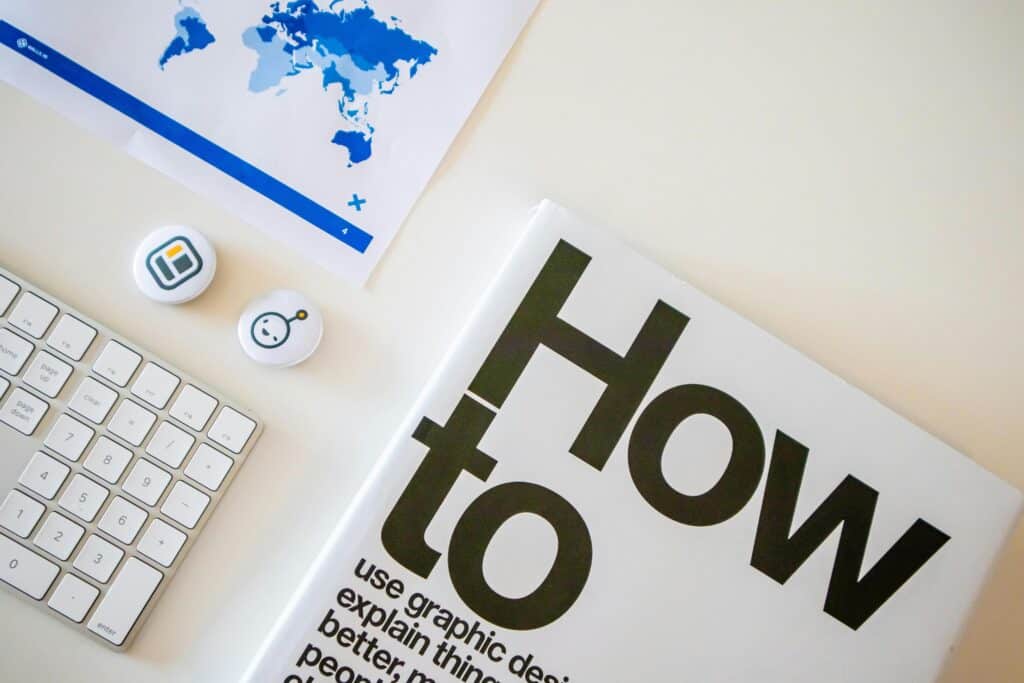The hard truth about today’s business world is that it doesn’t stop changing. One day everything’s going fine, and then the next the earth lurches, the market wobbles, and everyone’s scrambling to figure out the best move.
If you’re a business owner, you already know this. You feel the shifts before the rest of us do. Markets dip, costs spike, competitors take sudden leaps—or fall right out of the sky. That’s just life in the big, blue ocean of 21st-century capitalism.

But here’s the good news: it’s not too late for your business. You can still catch up. You can still get ahead. If you start preparing now, you’ll be ready to not just meet the challenges of tomorrow but to embrace them—and come out ahead.
The name of the game: strategic preparedness.
I know, building a prepared business can sound pretty darn dramatic. I get it. Life’s hard enough as it is. You’ve got staff to manage, clients to deliver to, numbers to crunch. The last thing you need is some pie-in-the-sky concepts telling you to plan for things that haven’t even happened yet.
But this isn’t pie in the sky. It’s pie on the ground, all baked up and ready to eat. Because here’s what’s going down in today’s world (and the next normal): things like pandemic recovery, market volatility, climate change, supply chain breakdown, and all the other things that seem to go hand-in-hand with the modern world.

We’re no longer surviving. We’re thriving. And in order to thrive in today’s dynamic landscape, we’ve got to be strategic about our preparedness.
Call me overly dramatic. That’s fine. But believe me, if you give your business a little wiggle room to prepare today, you’ll thank me later.
Ready to learn a little something? Let’s jump in.
What Exactly Is Strategic Preparedness?
Look, I know a lot of buzzwords are in here. Strategic preparedness. Resilience. Buffer. Preparedness plan. Because if I don’t use enough words with trendy-sounding syllables, I’ll fail at getting you to read this.
So, in as few words as possible, I’ll tell you what preparedness really is: Don’t get caught off guard.
When it comes down to it, that’s all preparedness is. Being ready to face the curveballs life throws at us.
That means identifying weak points.
Building up buffers.
Knowing what to do when the phone rings.
It’s your business GPS. You may not be able to control traffic, but you can always reroute if you need to.
The Critical Elements of a Robust Preparedness Plan
Okay, time to get specific. Here’s the lowdown on what makes a great preparedness plan.
1. Risk Assessment
Think about your business. All of it. Your products, your staff, your location, your customers. Now think about everything that could go wrong. Potential risks, threats, or problems. Write them down. Be generous. Be detailed. Then rate them by likelihood and severity.
Ta-da! You’ve got yourself a risk matrix.
2. Crisis Communication
When the pressure’s on, how and what you communicate are just as important as the decisions you make.

Your employees need to know what’s happening. (And they need to know it ASAP.) Your customers and vendors need to hear from you. Reassurance is half the battle.
But you can’t text in the middle of an emergency, hoping your Wi-Fi’s still working.
Draft your messages now. Save them. Test them out. Make sure everyone knows who’s responsible for what.
3. Resource Flexibility
Here’s the rub: when things go south, you need options.
For some, that might mean making remote work a reality in an instant.
For others, that might mean having second-hand modular buildings available for emergencies on the property if the building’s unusable.
Or maybe it’s diversifying suppliers so one bottleneck doesn’t kill you.
Flexibility = control, even in chaos.
Planning for the Unexpected (Yes, Even Weird Things)
Sticking with the storms-as-a-metaphor thing, no, not all emergencies are hurricanes. But whether it’s a meteorological mayhem, a hacker, a road collapse, a new rule, or a spike in inflation, the end result is often the same: Total disruption.
And let’s face it, preparing for upcoming storms is key to minimizing the impact.
Means you can keep serving clients (who will still need your services). Keep your employees earning a living and contributing to society. Keep turning those productivity wheels.
It’s the right thing to do.
Planning for all that might happen doesn’t have to be intense or dramatic. You just need to consider each point of your risk matrix and plan.
Maybe that means reviewing your insurance.
Maybe that means beefing up your cybersecurity.
Maybe that means holding a “catastrophe day” drill every year and learning from it.
Don’t wait for problems to happen. Be ready for them. It’s much less stressful when they do come along, guaranteed.
Humans Before Crisis: Your People Are Your Biggest Asset


Okay, this isn’t actually a separate step in the process, but it’s important enough to call out.
No preparedness strategy is complete without considering your people.
They’re not just a cog in the machine. They’re the machine.
Don’t set a plan without giving them consideration. A good preparedness strategy includes:
Training: Not a dry binder on the shelf you hope they never need to read. Real practice. Scenarios. Run a dry run so they know what to do when the electricity goes out (or the tsunami comes in). Make it educational. Have fun.
Support: Mental health coverage. Childcare backup. Tech support. All of it counts when you’re in a pickle.
Leadership: Crises bring out the worst (and the best) in us. Are your managers prepared to lead?
It’s worth it. Because prepared people are your best insurance policy.
Harnessing Technology for Agility and Adaptability
Okay, no, you don’t need to morph your small business into a tech conglomerate to plan for emergencies.
But a few well-chosen digital solutions can make your life that much easier when you need them.
Here are a few worth considering:
Cloud Storage
Cloud storage is a life-saver. Keeps all your data safe and sound when you’re unable to access the office network. We have so many cloud applications it’s easier to do it than not these days.
Messaging and Conferencing Apps
Slack, Teams, Zoom—whatever keeps you connected to your people and clients, wherever you are.
Project Management Software
Trello. Asana. Monday.com. Something to make sure everyone’s on the same page at the same time, even when there’s no office to physically be in.
Backups
Nothing else to say. Just. Back. Everything. Up. Seriously.
The point is: you don’t need to reinvent your business to be agile and adaptable. You just need a few key pieces of technology.
A Final Thought on Preparedness
Ready isn’t a destination. It’s a habit.
The fact is, there’s always another storm on the horizon. There’s always a second (third, fourth) wave of some problem that nobody saw coming.
And there’s always another preparedness plan to write.
The good news? It all stacks up. All the conversations, the plans, the drills. All that adds up to one thing: Resilience.
Resilience isn’t just bounce-back. It’s bounce-forward. And I’ll tell you right now, as the world wobbles, resilience is what’s going to set the leaders from the followers, the winners from the game-changers.
It’s a muscle. You’ve got to use it. Don’t wait for the next big crisis to hit your business before you start working on it. (Spoiler: it’s coming.)
Start small. Start today. Start building your buffer now. Then when the next storm hits, you won’t just survive—you’ll be ready.
Navigating the “next normal” doesn’t mean guessing in the dark. It can mean being in the driver’s seat. Ready to lead.
- 4shares
- Facebook0
- Pinterest1
- Twitter3
- Reddit0


